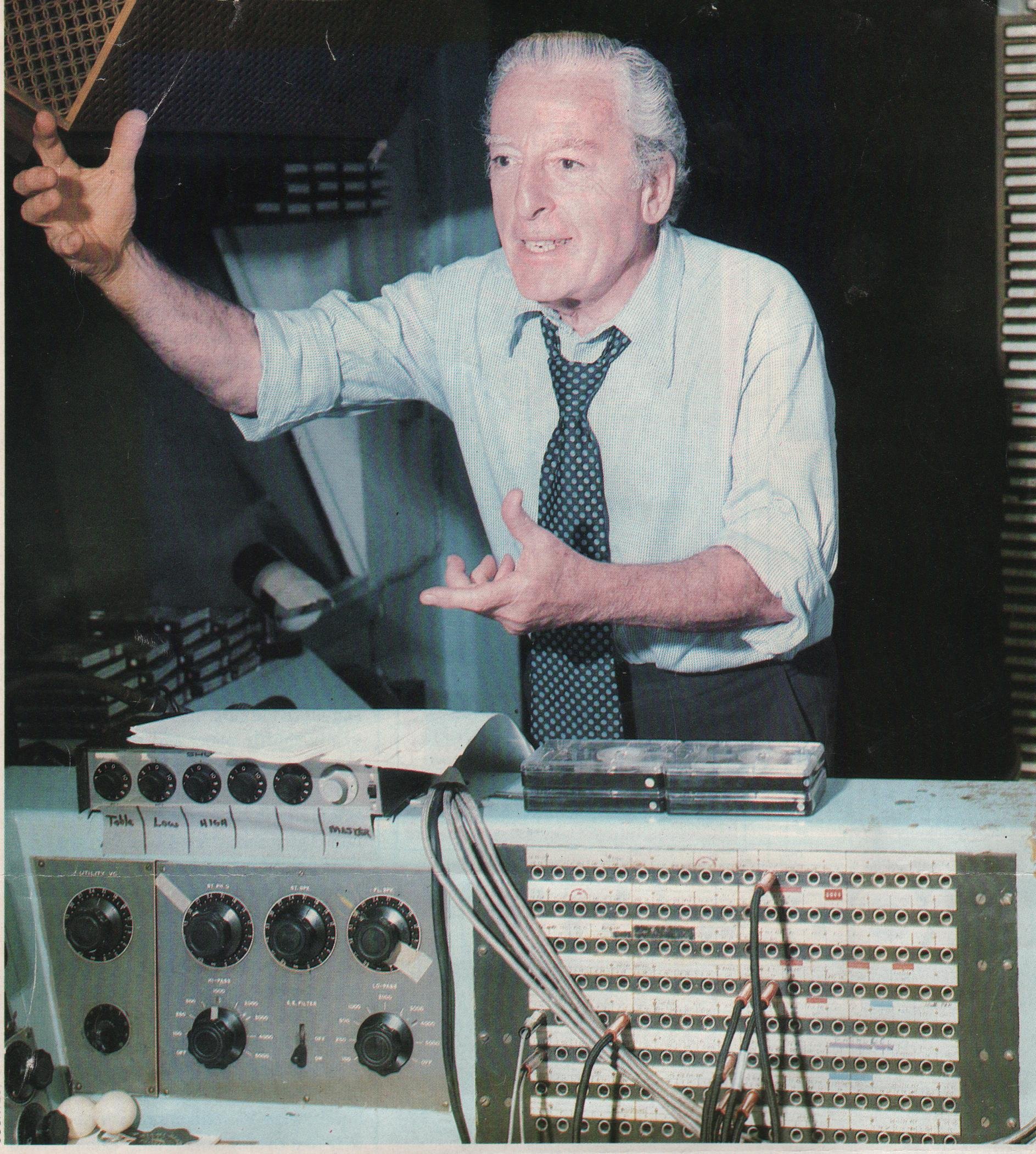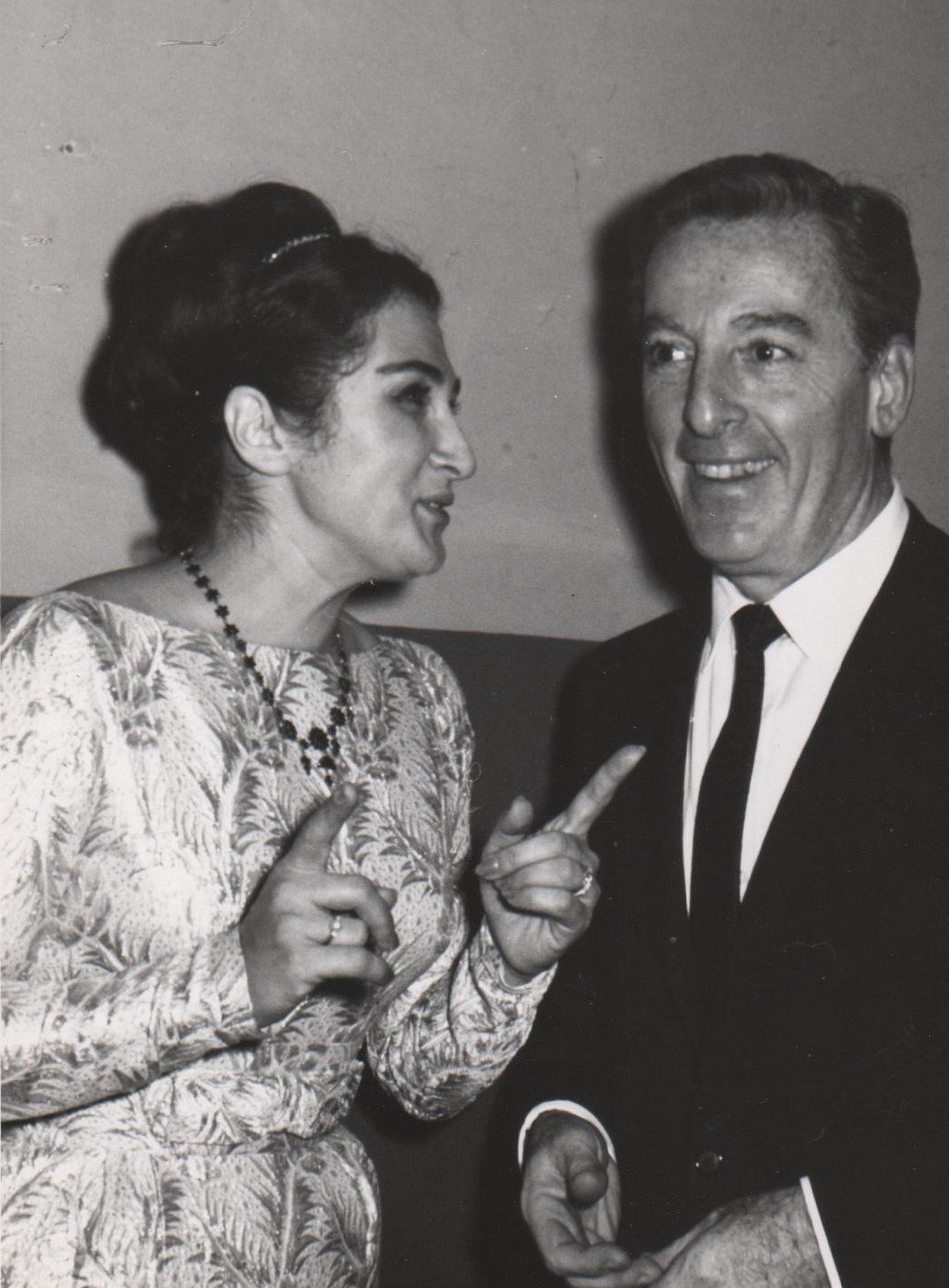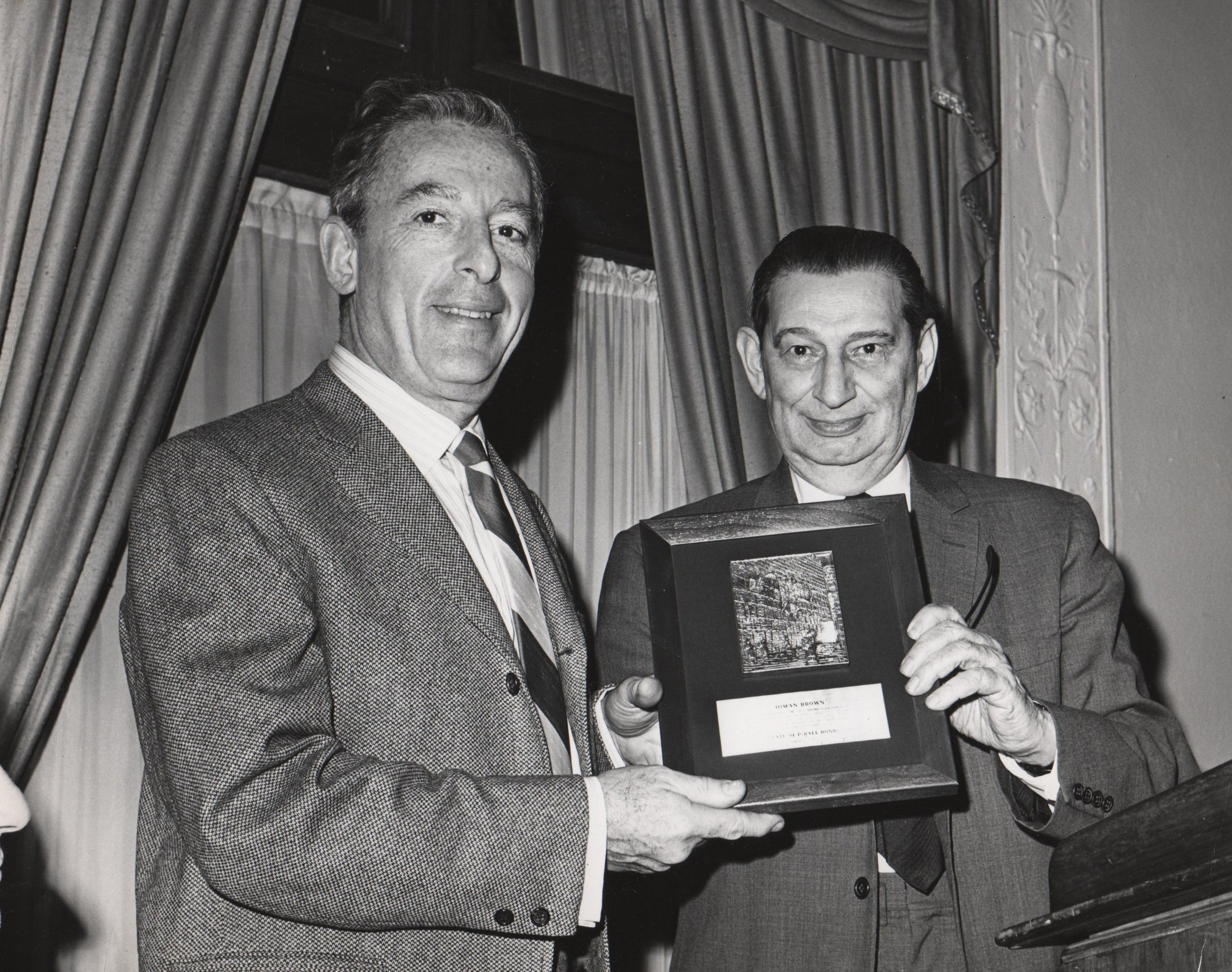
Himan Brown
Himan Brown (July 21, 1910 – June 4, 2010, also known as Hi Brown, was an American producer of radio and television programs. Over seven decades, Brown produced and directed more than 30,000 radio shows, for all of the major radio networks and syndication. He worked with such actors as Helen Hayes, Boris Karloff, Peter Lorre, Gregory Peck, Frank Sinatra and Orson Welles.
A recipient of the American Broadcast Pioneer and Peabody Awards, Brown was inducted in 1990s into the National Radio Hall of Fame.
Early life
The son of a tailor from a shtetl near the Ukrainian seaport of Odessa, Brown first learned about radio from a shop teacher at Brooklyn's Boys High School. At the age of 18, he began broadcasting on New York's WEAF, reading newspapers with a Yiddish dialect. One of his listeners was Gertrude Berg who wanted him to play Jake, her husband on The Goldbergs, which he did for six months. He continued as a radio actor but soon began to pitch shows directly to advertising agencies.
While at Brooklyn College, he recruited fellow student Irwin Shaw to write scripts, giving the author his first paid writing job. Shaw later based a character on Brown in his 1951 novel about the radio industry, The Troubled Air. In 1931, he earned a bachelor of arts degree from Brooklyn College and a law degree from Brooklyn Law School, where he was valedictorian.
On the air
Over 65 years, Brown produced more than 30,000 radio programs, including The Adventures of the Thin Man, The Affairs of Peter Salem, Bulldog Drummond, CBS Radio Mystery Theater, City Desk, Dick Tracy, Flash Gordon, The General Mills Radio Adventure Theater, Grand Central Station, Green Valley, USA, The Gumps, Inner Sanctum Mysteries, Joyce Jordan, M.D., Marie, the Little French Princess, The NBC Radio Theater, The Private Files of Rex Saunders, Terry and the Pirates and numerous daytime soap operas.[2] During World War II, he worked with the Writers' War Board, producing patriotic serials to aid the war effort.
Brown directed many episodes of shows he produced. In 1951–55, he directed the NBC detective drama, Barrie Craig, Confidential Investigator.
In the 1950s, he bought Adolph Zukor's Famous Players Studios at 221 West 26th Street (now Chelsea Studios) to produce his shows.
When television arrived, Brown produced 26 episodes of the syndicated Inner Sanctum TV series, plus a daytime show, Morning Matinee. Realizing that "all these guys making TV, they have to have a set," he profited by acquiring the studios in Chelsea; they were used for 35 years by New York TV production firms.
Through his non-profit educational foundation, Brown produced They Were Giants, radio programs dramatizing the lives of such literary figures as Walt Whitman and H. G. Wells, and We, The Living, fact-based dramas about the lives of senior citizens.
Brown also taught audio drama at Brooklyn College and the School of Visual Arts.
Personal life
In 1938, Brown moved to a ten-room apartment at 285 Central Park West, where he would live the rest of his life.
Brown had two children, Barry Kenneth Brown and Hilda Joan Brown, two grandchildren, and four great-grandchildren.
Hi Brown’s second marriage was with Shirley Goodman who was the President of the Fashion Institute of Technology in New York City.
Brown died on June 4, 2010.
Radio
Himan Brown's Mystery Theater. This is the revival of the Peabody Award Winning Radio Drama, originally broadcast from 1974-1982, rebroadcast in 1998 and 2000.
Radio veteran Himan Brown returned to the studio in 1973 to work on an ambitious project to revive the "golden age of radio" in the form of audio drama. This project was known to most as the CBS Radio Mystery Theater, but it always referred to itself as Mystery Theater. It presented the opportunity for the writers and actors of the "golden age of radio" to reunite in the name of the theater of the mind. The show was quite successful, running for nine years with an impressive 1,399 total episodes.
Though it was named "Mystery Theater," it often incorporated adaptations of classic stories, history, and drama.
The show was never syndicated, so any all episodes out there were once taped from the radio, many with mediocre to poor quality
The show's revival in 1998 and 2000 meant that Mystery Theater was on the air once again, but this time it could be recorded with better recording technology.
132 of the 137 known episodes in the revival are here, most are the highest quality in which this show can be heard.
Link: https://archive.org/details/HimanBrownsMysteryTheaterrevival

















